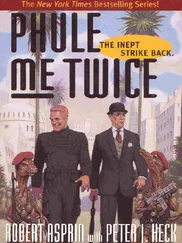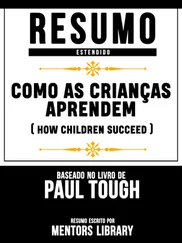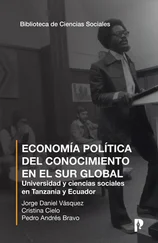In the 1990s Druckenmiller sat on the board of the Robin Hood Foundation, a well-funded and high-profile charity that gave grants to various organizations dealing with poverty in New York City. Rheedlen was one of the foundation’s biggest recipients, and it was at a Robin Hood board meeting one morning in 1994 that Druckenmiller first met Canada. At the time, a vision was just beginning to form in Canada’s mind of an alternative to the traditional social service agency: something bigger and more efficiently run, an organization that would bypass the sentimental you-can-save-this-child-or-you-can-turn-the-page appeals to donors and instead offer, in exchange for substantial financial commitment, results—measurable, quantifiable outcomes that even the coldest-hearted capitalist would appreciate. It was exactly the kind of nonprofit that Druckenmiller, a Republican who believed in lower taxes and smaller government and the wisdom of the market, was looking to support. The way Druckenmiller saw it, the tools of corporate America—management consultants, long-range plans, marketing data, quarterly targets—had created the strongest economy in the history of the world, but in the charitable sector, those tools were being ignored in favor of guesswork and good intentions.
At Canada’s invitation, Druckenmiller joined the Rheedlen board, and with Druckenmiller’s help Canada began to remake his organization along the sleek, efficient lines of a modern corporation. He hired a team of management consultants to help him write a ten-year business plan, and over the next several years the Harlem Children’s Zone grew quickly, its budget expanding from $6 million to $58 million. Construction began on a brand-new building on 125th Street, Harlem’s main boulevard, that would serve as the organization’s headquarters. The annual fundraising dinner became a glittering event held in a cavernous restaurant across from Grand Central Terminal. Even as the donations increased, though, Druckenmiller remained the organization’s largest benefactor. He personally contributed many millions of dollars a year, and he paid for about a third of the cost of the new headquarters himself.
There were two other Harlem Children’s Zone board members at the lottery: Mitchell Kurz, the treasurer, who had retired early from a successful career as an advertising executive to become a high school math teacher in the South Bronx, and Kenneth Langone, a wealthy investor who had helped found Home Depot and now served as the chair of Promise Academy’s board of trustees. Canada had invited the three men up to Harlem to witness what he had hoped would be a celebration, the culmination of months of hard work behind the scenes. But as the crowd swelled, he began to get an uneasy feeling about the way the evening might turn out. He knew that for half these parents, the night would indeed be celebratory, full of hope and promise. But the others, he realized, were going to leave disappointed. There was no requirement for charter schools to hold their lotteries in public; legally, Canada could have drawn the names behind closed doors and simply mailed out acceptance letters. But he had decided to make it a big show. It seemed like a good idea at the time. Now he wasn’t so sure.
“COULD I HAVE everyone’s attention?”
Canada had mounted the stage, and he stood behind a lectern, leaning over the microphone. The room was loud, a steady din of chatter pierced by an occasional wail from a child, and Canada waited for the noise to recede. On a long table next to him, a gold drum held a jumble of index cards, each one printed with the name of a prospective student.
Canada had turned fifty-two the previous January. When he joined Rheedlen, two decades earlier, as the organization’s educational director, he carried an intimidating physique, a broad chest and thick biceps, the legacy of an adolescence spent in schoolyard brawls followed by years of black belt training in karate. Now, in middle age, he still had the look of an athlete, but he had grown leaner with the years, tall and rangy, his arms long and his wrists narrow. His hair was going gray, and he wore it shaved close to his scalp. A sparse mustache and goatee, also graying, framed his mouth. These days, Canada divided his time between the streets of Harlem and the boardrooms of corporate America, and when you looked at him you could see the two sides of his personality reflected. Tonight, as always, his downtown uniform was flawless: his dress shirt was monogrammed and his cuff links were gold. But there was something about the smooth, loping way he moved—or even now, the way he stood curled over the lectern—that was straight from the streets of the South Bronx.
When the hum in the auditorium died down, Canada began. “We are calling our school Promise Academy because we are making a promise to all of our parents,” he said. “If your child is in our school, we will guarantee that child succeeds. There will be no excuses. We’re not going to say, ‘The child failed because they came from a home with only one parent.’ We’re not going to say, ‘The child failed because they’re new immigrants into the country.’ If your child gets into our school, that child is going to succeed.” The curriculum at Promise Academy would be intense, he said: classes would run from 8:00 A.M. to 4:00 P.M., five days a week, an hour and a half longer than regular city schools. Afterschool programs would run until 6:00 P.M., and the school year would continue well into July. There would be brand-new facilities, healthy lunches, a committed staff. “If you work with us as parents, we are going to do everything—and I mean everything—to see that your child gets a good education,” Canada said. “We’re going to have the best-quality education that parents can imagine.”
From their narrow wooden seats, the parents watched Canada and considered the promises he was making. It was a complicated time to be raising a school-age child in Harlem. For as long as anyone could remember, the neighborhood’s public schools had been uneven at best and downright dangerous at worst. Parents traded rumors about a promising new principal or a decent after-school program, but their options had always been limited: Catholic school, if you could afford the tuition, or whatever the city was offering. In recent years, though, Harlem had become home to a growing number of educational alternatives: small, narrowly focused academies, selective public schools, and brand-new charters. The new schools meant more possibilities, but also more risk: how were you supposed to know which promises to believe?
For some in the auditorium, the choice was obvious: they had decided on Promise Academy the moment they heard it was opening. There were forty children currently enrolled in Harlem Gems, the Harlem Children’s Zone’s prekindergarten program, and all forty of them had entered the lottery for the Promise Academy kindergarten. Yasmin Scott was one of the true believers. She was here with her daughter, Yanice Gillis, who was about to turn five. About a year earlier, an outreach worker had stopped Scott on the street and invited her to attend Baby College, the Harlem Children’s Zone parenting program. Scott signed up. She was young when she had Yanice, just fifteen, and she felt like she needed all the help she could get. For Scott, Baby College turned out to be a great experience—nine Saturdays in a row, four or five hours a day, discussing immunization schedules and asthma prevention and the importance of reading and singing to your baby. The discipline classes, especially, were real eye openers, where she learned about time-outs and alternatives to corporal punishment. After Scott graduated from Baby College, she wanted more, so she enrolled Yanice in Harlem Gems, an all-day pre-K with a 4:1 child-to-adult ratio. After half a year in the program, Yanice was shining, learning the basics of reading and math, singing songs in French, coming home armed with words like “astronomy” and “meteorologist.” Scott hoped Promise Academy would mean more of the same. She couldn’t stand the thought of sending Yanice to a regular Harlem public school after this.
Читать дальше



![Коринн МакКей - How to Succeed as a Freelance Translator [calibre 3.46.0]](/books/402693/korinn-makkej-how-to-succeed-as-a-freelance-transl-thumb.webp)








